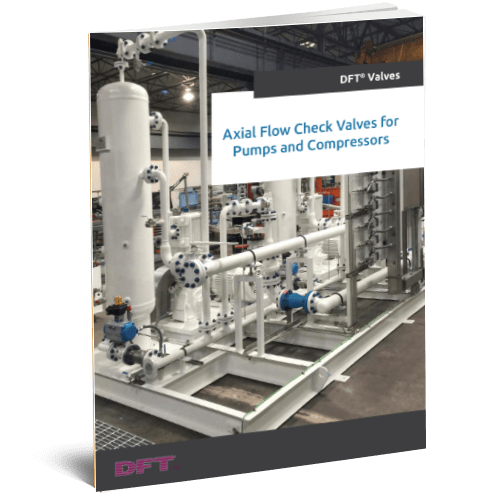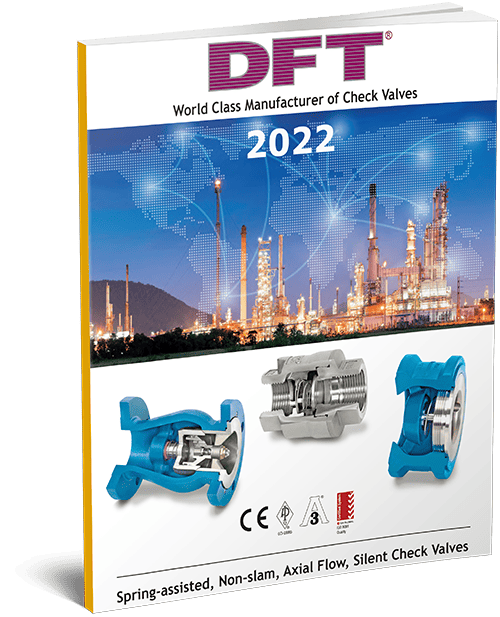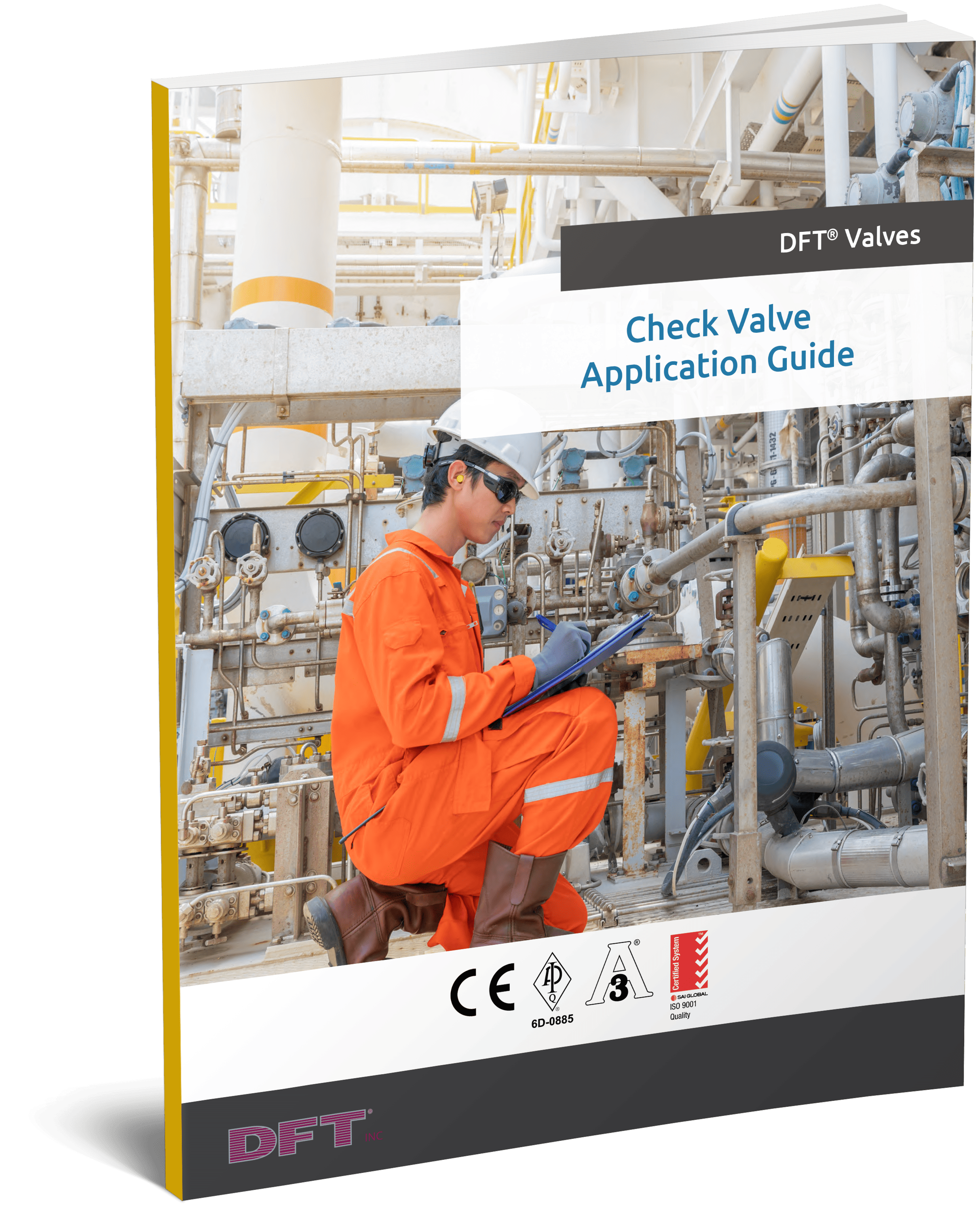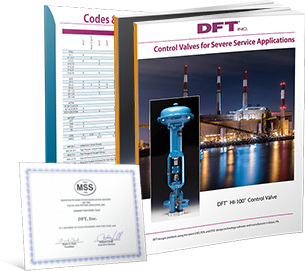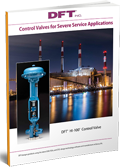Category Archive: Control Valves
How to Select the Right Control Valve
Control valves play a vital role in ensuring the efficiency of a fluid system. It is important to choose the one you use carefully. Otherwise, it may not operate or perform as expected, resulting in decreased process efficiency and/or system damage.
There are many factors to consider when selecting a control valve for a fluid system, such as versatility, flow control stability, connectivity, and maintenance requirements. Below, we highlight how these control elements work and what selection considerations to keep in mind.
How Does a Control Valve Work?
Control valves regulate the flow of fluid through a system by restricting or expanding the fluid passageway. This function alters the volume of fluid that passes through the system within a given time frame (i.e., the flow rate) and the pressure of the fluid.
A rising stem valve is one type of control valve. In this valve design, the valve stem raises and lowers the valve trim package to increase or decrease the size of the passageway, resulting in steady flow, increased flow, or decreased flow. This adjustment is made whenever the targeted process parameter is not at the right value.
Key Control Valve Selection Considerations
There are many types of control valves available, each of which can come in numerous designs, configurations, and sizes. This broad selection can make it difficult to choose which one is right for a given fluid system, but knowing what parameters are important can help facilitate the selection process. Some of the key control valve selection considerations include:
- Is the fluid a liquid, gas, or steam? Is it inert or reactive?
- Pressure rating. What are the standard and maximum pressure levels to which the valve will be exposed?
- Temperature rating. What are the standard and maximum temperature levels to which the valve will be exposed?
- Flow rate. What flow rate range should the valve be able to handle?
- What is the flow coefficient (Cv)—the flow rate (GPM) for a pressure drop of 1 PSI across the flow passage—for the system? This value affects the size of the control valve needed.
- Installation requirements. How should the system be configured? What are the piping size, upstream vs. downstream, and valve mounting requirements and restrictions?
- Design. What type of valve is required? A straight through venturi, or globe valve? A standard service, medium service, or a severe service valve?
- Industry/country standards. What industry and country standards are applicable? Key standards include American Petroleum Institute (API), American Society of Mechanical Engineers (ASME), Canadian Registration Number (CRN), and Pressure Equipment Directive (PED).
Quality Control Valves From DFT®
For control valves you can trust in your most critical fluid system applications, turn to the experts at DFT®! We are a premier manufacturer of check and control valves. Our control valve selection includes:
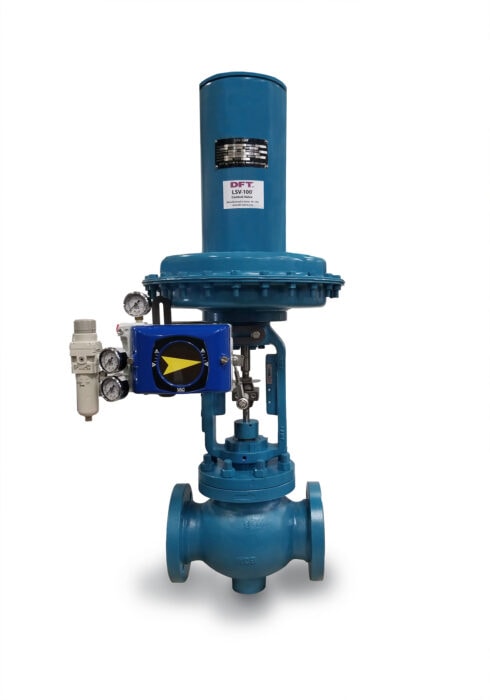
- HI-100®. HI-100® valves are severe service control valves with an in-line straight-thru venturi design. They are designed for use in harsh operating conditions, demonstrating smooth operation in high or low temperatures and/or with process fluids carrying suspended particles (e.g., slurries). They also have quick-change trim that allows for in-line replacement, interchangeable upstream and downstream seats, and wear bushings to extend service life and reduce operating costs.
- Ultra-Trol®. Ultra-Trol® valves are abrasive service control valves that are designed for use in erosive flow systems requiring flanged end connections. Similar to the HI-100® line, they have an in-line through ported venturi flow shape and a contained spherical ball, which help ensure smooth and efficient operation in high or low temperatures and with slurries.
- MSV-100®. MSV-100® valves are medium service control valves that are designed for use in flanged applications where bench repairs are common. They have a similar seat and internal design to HI-100® valves. They are suitable for on/off service or modulating control applications involving gas, liquid, or steam systems.
- LSV-100®. LSV-100® valves are economical Globe Style control valves designed for flanged applications. They have trims that can be replaced in the field through the bonnet. Suitable applications include on/off service and modulating control of gas, liquid, or steam systems.
For information about how to select the right control valve, contact us today. To learn more about our valve products, check out our catalog or request a quote.
Upcoming Webinar: Severe Service Control Valves – Problems & Solutions
Maintaining the performance of your facility’s control valves will ensure continued successful operations for your organization. At DFT®, we know a thing or two about valves, and we’re excited to share our knowledge at our upcoming webinar about control valves on May 15, 2019 at 2:00 PM Eastern Standard Time.
During the webinar, we will discuss some of the common problems and solutions that develop in severe service valve equipment, and we’ll also explore a few issues that can lead to critical failure in your service control valves.
Talking Points and Topics
Some of the questions that we’ll answer in our webinar include:
- What is severe service?
- What are the different types of control valves?
- What types of service do they control?
- What is cavitation control?
We’ll also talk about our valves’ design features and how they handle the effects of cavitation and other wear and tear issues. We will provide an overview of the Bernoulli Principle, which states that decreases in pressure and potential energy lead to increases in the speed of a fluid—one of the basic principles by which valves operate today.
Finally, we’ll go in depth on how causes and effects of:
- Flashing and cavitation
- Providing required flow
- Actuation selection
- Achieving tight shutoff
- Slurries and erosion
- High-pressure applications
- High-temperature applications
After we finish our presentation, there will be a chance to discuss the topics covered as well as answer any questions you may have.
Sign-up for the Webinar Today!
What You Need to Know About Severe Service Control Valves –Problems & Solutions
We at DFT® are excited to share our years of comprehensive experience in valve design, performance, and functionality relative to fluid control systems. Be sure to register in advance to be included in the latest information within valve technology.
If you would like to learn more about our products, services, and other resources, don’t hesitate to view our catalog or contact our sales representatives today.
Detecting the Issues with your Control Valve
Control valves are a single component of a bigger system, but they control fundamental parameters of a process to keep applications performing optimally.
Control valves are used to control fluid passage through regulation of flow, level, pressure, or temperature.
Control valves are commonly used in oil & gas and manufacturing industries.
The efficiency of automatic control valve operations has saved time and reduced wastage across various applications.
Nonetheless, it is essential to keep control valves in check by performing yearly tests and detecting causes of performance issues immediately.
We’ve got a few helpful tips to keep in mind next time you want to better understand why your control valve isn’t functioning at its best.
Check for Leaks
One of the most significant issues regarding control valves are the internal and external leaks.
Internal leaks can be caused by the fact that components are becoming worn out or that the actuator of the valve isn’t correctly set up.
More often than not, there is a specific allowable range of leakage per valve; however, if the valve is leaking more than the ‘maximum allowable leakage’ this indicates a concern that may require some repair or replacement.
External leaks are also prominent in control valves and release damaging fugitive emissions into the air.
External leaks are usually a result of valve packing for improper maintenance, material incompatibilities, and vibration of valve assemblies.
Sticky Valves & Stiction

Minor leaks are often resolved by tightening the packing of the valve.
Unfortunately, this is sometimes done without realizing that excessively tightening the valve packing will cause the valve to stick in place and stop functioning correctly.
Along with over-torquing the valve packing, the valve also become faulty due to issues with the positioner that cause the valve to stick.
Stiction is the final player in a sticky valve situation that happens when the static friction exceeds the moving friction inside the valve and causes valves to stick in a particular position.
It’s just the wrong valve
A recurring problem many operators face with control valves is purchasing the wrong equipment for their application. Sometimes valves are used in service conditions that they aren’t compatible with, causing them to stop working and wear out much faster.
It is also possible that the actuator isn’t the correct size for the valve causing numerous technical issues. Proper calibration of the positioner is also essential to the valve functioning optimally. Understanding what the valve is being used for and its role in the assembly can help avoid purchasing the wrong equipment for the process.
Control valves can be maintained and checked for issues and failures regularly to maximize the valve’s longevity.
Depending on the service, system, and type of valve operation, operators can adequately analyze the kind of problems the valve may be having within the system.
DFT control valves are designed to ensure you make the best choice for your next project or application.
Ways to Maintain Your Control Valve Maintenance Budget
Today’s power generating plants face two major factors: reduced maintenance budgets and competition from renewable energy.
Maintenance budgets are tight, often forcing managers to put off problems that really require serious attention. The increasing popularity of renewable energy sources is diminishing the demand for traditional fossil power generation. As a result, plants are regularly operating below intended capacity or coming off line.
Base-loaded fossil power plants operating at reduced generating capacity or become cycling units places heavy demand on control valves in ways they may not have been designed to operate. When control valves operate below their intended capacity they operate closer to their sealing surfaces than intended.
This reduced flow rate greatly increases the velocity within the valve and increases potential erosion. This is especially true on Feedwater and Boiler Feedwater Pump recirculation control valves. Plant managers can begin minimizing control valve seat erosion and reducing subsequent maintenance costs by reviewing sizing of control valve internal trim.
Trending data is excellent for determining actual operational conditions versus what was recommended in the valve specifications.
Control valves are designed with the following factors in mind:
- Fluid type
- Upstream pressure
- Downstream pressure
- Flow rate
- Temperature
Next, plant engineers, procurement, and maintenance planners should understand where the control valves should operate within the facility:
- Less than 10% open should be avoided since the valve will wear quickly.
- Plan to keep the range of control valve operation between 20% and 80% open.
If trending information on the valve is available, managers can quickly see if they are operating within the proper range. If not, they can provide the control valve manufacturer with new operational conditions and request suggestions on improving low flow performance.
The Solution
 The takeaway is an oversized control valve will ultimately wear more quickly under lower than designed flow conditions. Plant managers can prevent erosion and limit maintenance spending by reviewing and possibly changing the control valve’s sizing. This can be done in one of two ways:
The takeaway is an oversized control valve will ultimately wear more quickly under lower than designed flow conditions. Plant managers can prevent erosion and limit maintenance spending by reviewing and possibly changing the control valve’s sizing. This can be done in one of two ways:
- Replace the internal valve trim with the proper size for new operating conditions, or
- Downsize to a smaller valve.
While a full control valve replacement is more expensive than a trim replacement, both solutions deliver significant long-term maintenance and operating savings.
DFT®’s HI-100® is a competitively priced severe service control valve with a low total cost of ownership. With robust features designed for long service life, the HI-100® will help keep a plant’s maintenance budget in line.
Sign Up for Monthly Control Valves Tips
DFT® proudly offers a regular Control Valve Newsletters to address common industry applications. Applications covered in recent Newsletters include:
- Feedwater & Steam Drum Level Control
- Sky Vent for Combined Cycle Plants
- Turbine Bypass
- Soot Blower Control
- Attemperator Temperature Control
To receive monthly control valve Newsletters sign up for the DFT® Control Valve Newsletter.

My Control Valve is Causing Problems, What Do I Do?
It’s my weekend off and I get a call from the plant. The level alarm has gone off and our process had to be shut down. It turns out that the level control valve has once again failed in its task. We do our typical “work around” to start up the system and operate the level control in manual until it’s fixed.
It’s the Google age, so I spend Saturday night looking for help on the Internet. Unfortunately, by Sunday morning I am more confused than when I started. I need information that actually helps instead of making things worse—where can I find a solution in order to reclaim my weekends?
Let’s start with the basics – What choices do I have?

Often, the replacement choice is made simply on the basis of the pipe size in the line that is made by removing the old valve. Control valves come in many different configurations, but which one do I need?
- Rotary Types:
- Butterfly Valves use a flat disk that is rotated in the flow of fluid. They are well suited in larger line sizes where a minimal pressure drop (less than 50psi) is desired.
- Ball Valves use a sphere with a hole through the center. The ball is rotated in the flow to adjust the flow of the fluid. They are generally best used in on/off situations.
- Plug Valves use a cylinder to obstruct the fluid flow, and similar to ball valves, they feature one or more holes through the cylinder. Flow is regulated by rotating the cylinder within the valve chamber. Like ball valves, they are good choices for rapid shut off, but they can introduce turbulence into a process system in some conditions.
- Rising Stem Types:
- Globe Valves are named for their generally round bodies, and they use a linear rising stem motion. This design is easy to maintain in harsh environments.
- Venturi-ball Valves employ the same linear rising stem motion. Designed for high pressure drops and easy maintenance.
Since the pressure drop through the control valve for this level control application is over 100 psi, I know that I need a rising stem valve.
What Trim Characteristic Should I Use?
- Linear Trim – Changes in position are directly proportionate to changes in flow (a 10% change in valve lift produces a 10% change in flow). Linear trim is used in systems where the pressure drop through the control valve is the major pressure drop in the system
- Equal % Trim – Equal changes in position cause an equal percentage change in the previous flow (a 10% change in valve lift produces a 48% change in flow for each position). Equal % trim is used in systems where the pressure drop through the control valve is generally less than the other pressure drops in the system.
In order to choose the proper trim characteristic, I need to know what I am trying to control.
-
Liquid Level
- Use Linear trim unless the criteria for Equal % trim is met
- Use Equal % if the pressure drop at max flow is 1/5 that of the drop at min flow
-
Pressure
- Use Linear trim for slow process changes
- Use Equal % trim for fast process changes
-
Flow
- Use Linear trim for varying set point
- Use Equal % trim for varying load
-
Temperature
- Use Equal % trim
Since I am controlling the liquid level in this example with relatively constant pressure drops, I choose Linear trim.
The DFT HI-100™ control valve is a good choice for this application. It is a rising stem control valve with a Linear characteristic. The valve has the Quick Change Trim feature that permits the in-line replacement of the internal trim.







